Tara Winds presents On Fire
Program
to be selected from the followingDancing Fire (2016) Kevin Day
Foshay Tower Washington Memorial March (1929) John Philip Sousa
The Scorcher March (1897) George Rosey
Ash (2018) Jennifer Jolley
Firefly (2008) Ryan George
Harry Potter and the Goblet of Fire (Symphonic Suite) (2005) Patrick Doyle/Robert Sheldon
Hogwarts' Hymn & Hogwarts' March
Carnival of Venice (Fantasia Brillante) (1929/1936) Del Staigers
Dr. Adam Frey, Euphonium Soloist
Berceuse et Finale from the Firebird (1910/2005) Igor Stravinsky/Clark McAlister & Alfred Reed
Kingfishers Catch Fire (2007) John Mackey
II. Movement
Special thanks to the Atlanta Trumpet Ensemble, Kay Fairchild, Music Director, and the Atlanta Youth Wind Symphony, Dr. Scott Stewart, Conductor, and Kay Fairchild, Brass Coordinator
To read more about the conductors, performers, and other individuals who make Tara Winds possible, please visit our People page.
Program Notes
Dancing FireWhen I was writing Dancing Fire, I wanted to write a piece for my high school band program and its directors for the great pieces we played, the fun times we had, and the excitement our bands created at our concerts. The picture I had in my head before I began writing was a group of people surrounding a large bonfire during the night. These people began dancing around the fire, having fun, singing songs, and ultimately, celebrating life.
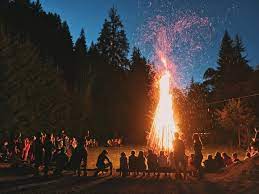
Once I had that picture in my head, along with the constant repeating motif that eventually became the melody for the entire piece, the rest of the work fit together nicely, and in two weeks it was done. The composition brings this mental picture I had to life in a fun and energetic way with dance-like percussion and a constant groove, as well as its contagious melody, a mysterious soprano sax solo, and a climactic ending.
This was written in dedication to the Arlington High School Band Program in Arlington, Texas, and to my former band directors, Michael Hejny, Nathan Burum, and Nathan Hervey.
- Program Note by composer
Foshay Tower Washington Memorial March
Wilbur Foshay was a wealthy businessman in Minneapolis and constructed a building to model the Washington Monument, called the Foshay Tower. A gala celebration was planned and Sousa was invited. Foshay made a lucrative offer for the band's services over the Labor Day weekend (1929), so Sousa felt that a new march was in order, which came to be known as Foshay Tower Washington Memorial March. However, two months after the event, the stock market crashed and Foshay's financial empire collapsed; he had misrepresented his stock and eventually went to prison. Sousa "got burned" and was never paid for the March or his services. Sousa didn't want to be associated with the Foshay scandal and withdrew the march from the public. It wasn't until 1988, when a group of Minneapolis citizens decided to raise money to pay off Foshay's debt to Sousa's heirs and the March was finally heard at the 60th anniversary of the Foshay Tower.
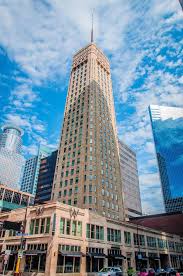
The Scorcher
Composer George Rosenberg (1864-1936) used the name “George Rosey” professionally. Rosenberg is believed to have emigrated from Europe to New York City, where he initially used his musical training to arrange compositions for vaudeville. Rosenberg’s own compositions had the rhythm of ragtime, which was reaching its height of popularity in the late 1890s. By 1917, Rosenberg was operating the George Rosey Publishing Company in New York City. The woman bicyclist on the cover is the “Scorcher.” The word was slang for a bicycle racer. In the 1860s, calling a woman bicyclist a “scorcher” would have had profoundly negative connotations. But by the 1890s, the negative connotations had diminished and both men and women were happily riding bicycles, joining bicycle clubs, and...apparently...dancing to music inspired by bicycling hence, The Scorcher two-step march.
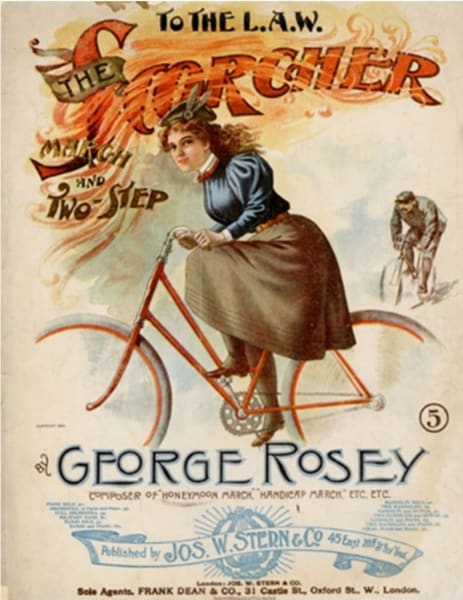
A huge factor in the rise in respectability for women bicyclists was the inclusion of women members in the League of American Wheelmen (L.A.W.), to which this piece of sheet music is dedicated. From its establishment in 1880, women members were welcomed. Today the group is known as the League of American Bicyclists, with its mission to create a “Bicycle Friendly America.” Given the League’s important role advocating for paved roads in its early history, it seems only fair that bicyclists get road space today. Here’s to all the 21st-century Scorchers!
Connie King, Chief of Reference and Curator of Women’s History
https://librarycompany.org/2020/12/04/featured-acquisition-the-scorcher-1897/#/
Ash
I never saw snowfall as a child growing up in Southern California; it was more a phenomenon that I saw in cartoons or read in children’s books.

I did, however, witness my first ash-fall when I was in elementary school. I looked up into the clouded sky and saw specks of ash falling from it. Excited but puzzled, I looked to my elementary school teacher during recess and held out my hand. “Oh, that’s ash from the wildfires,” she said. At that time, I couldn’t comprehend how an enormous forest fire could create a small flurry of ash-flakes.
Now I have the ominous understanding that something so magical and beautiful comes from something so powerful and destructive.
- Program Note by composer
Firefly
I'm amazed at how children use their imaginations to transform the ordinary and normal into the extraordinary and fantastic. Just about anything they come across can be used to spark their fantasies and usher their minds into unseen worlds. A stick on the ground becomes a wand with magical powers or a sword to fight off bad guys. A collection of rocks turns into buried treasure, and a blanket stretched over two chairs becomes a cave to hide in. And things found in nature -- birds, waterfalls, flowers, and even insects -- can take on mythic identities when viewed through the eyes of a child.
The idea for Firefly was born one night as I watched my four-year-old become mesmerized by a firefly that had wandered into our front yard. When I asked her what she thought of the "firefly" she looked at me with a puzzled look and said with a corrective tone, "Dad, that is not a firefly... that's Tinkerbell, and she's come to take me with her on an adventure!"

Firefly is dedicated to my daughters Sophia and Nyla, who ignite my imagination and bring awe and wonder into my life every day.
- Program Note by composer
Harry Potter and the Goblet of Fire (Symphonic Suite)
As a boy growing up in small-town Scotland, Patrick Doyle couldn’t wait to get to his junior orchestra rehearsals every Sunday. When he began composing, he assumed making up songs was something everyone could do. All he needed was a simple phrase of encouragement to make it a career: “Has anyone ever told you that you write beautiful melodies?” Doyle recalled those words from a mentor while meeting with members of Berklee’s Harry Potter Soundtrack Orchestra (HPSO). In an hour-long session, the HPSO recorded multiple takes of two of Doyle’s works for Harry Potter and the Goblet of Fire, the fourth film in the beloved series. Among the composer’s other works are a wide range of soundtracks for Sense and Sensibility, Carlito’s Way, Brave, and Cinderella.
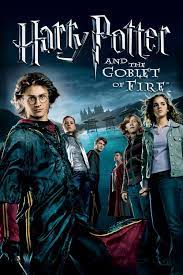
Recording 'Hogwarts'
Conducted by club founder Gabriela Sofia Gomez-Estevez, fresh off the orchestra’s sold-out show in early March at the Berklee Performance Center, the 40-piece orchestra recorded Hogwarts’ March and Hogwarts’ Hymn. From the control room, which was crowded with about 20 observing students and faculty members, composition major Isaac Johnson used the talkback system to make a suggestion after the orchestra rehearsed the march for the first time. “Much more of the double forte,” he said. “Just bring it all up, whatever you’re doing.” When Doyle arrived, he took a seat beside Gomez-Estevez and followed along with the score. After a clean first take, he beamed and pronounced himself “chuffed.”
Then he launched into a little story for the orchestra’s benefit. He was inspired to write the whimsical, upbeat tune they’d just played, he said, while sitting in a café in the south of France, when a local brass band walked in. “It was a cacophonous, classic European street band,” he recalled. Suddenly he knew how he wanted his Hogwarts’ March to sound. He jotted down notes for it on a napkin. Later in the session, he moved into the control room, where he suggested that the musicians think of the somber Hogwarts’ Hymn as a song for vocals. “Make it as legato as you can: operatic,” he said, demonstrating by singing a few nonsense syllables.
Coming so soon after the student orchestra’s concert, Doyle’s visit to campus was “fortuitous,” said Alison Plante, assistant chair of film scoring. “We were bringing him here for the residency, and we thought we’d do a demo, a mock recording session.” After the session, as the musicians packed up their instruments, the chatty, spritely Doyle held court in the studio, accepting the students’ thanks for his visit and dispensing encouragement. “One casual word is enough,” he said, recalling the praise that set him on his own path in music.
In a critical time for orchestral music, he said, films such as the Harry Potter series have gone a long way toward retaining interest among young students, as the Harry Potter Soundtrack Orchestra makes clear. “There are always going to be costume dramas and epic movies,” he said, “and people love live orchestras.”
Source: https://college.berklee.edu/news/harry-potter-film-composer-makes-magic-hpso
Carnival of Venice
The Carnival of Venice is a folk tune popularly associated with the words "My hat, it has three corners". A series of theme and variations has been written for a number of solo instruments as "show off" pieces that contain virtuoso displays of double and triple tonguing, and fast tempos. Charles Delaware Staigers was an American cornetist, born in 1899 in Muncie, Indiana. At the age of 15, he was hired to play in Patrick Conway's band and in 1918, he joined John Philip Sousa's band as the assistant to cornet soloist Frank Simon. He stayed with John Philip Sousa for two years and played "Taps" at John Philip Sousa's funeral.
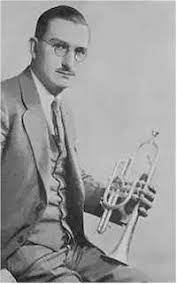
After leaving Sousa, he became first trumpeter at The Hippodrome and later at The Strand Theatre in New York City. In 1926, he joined the Goldman Band and his first appearance was in Central Park before a crowd of over 25,000 people which drew vociferous applause and bravos. Staigers moved to Los Angeles in the 1940's and became a studio musician at radio stations and film studios. He died at age 50 and in the words of Edwin Franko Goldman, Staigers was the "greatest cornetist in the world".
Source https://en.wikipedia.org/wiki/Del_Staigers
The Firebird
In 1910, Sergei Diaghilev, a Russian art critic, patron, ballet impresario and founder of the Ballets Russes, envisioned a lavishly mounted dance production entitled The Firebird, with its plot adapted from Russian fairy tales. The famous Russian composer Anatoly Lyadov was commissioned to write the music. When Lyadov did not produce quickly enough, Diaghilev passed the commission along to the relatively unknown Igor Stravinsky. It was the beginning of a fertile relationship, including Petrushka (1911), The Rite of Spring (1913), Pulcinella (1920), and Les Noces (1923).
The story of The Firebird is the tale of Prince Ivan in the realm of the immortal King Katschai, a realm he enters quite unwittingly while lost in the forest. As he happens upon an enchanted garden, he spies and captures a luminous creature, the Firebird, half-bird, half-woman. He is startled by her brilliance and beauty, and releases her, in exchange for which he is given a magical feather. Next, the prince spies thirteen princesses and falls in love with Elena, the most beautiful. The prince follows the maidens to the palace after celebrating into the night, where guards capture him. With his magic feather, he summons the Firebird, and the king, along with the palace creatures, puts on an “infernal dance” unto exhaustion under the Firebird’s spell. The Firebird relates the secret of Katschai’s immortality to Prince Ivan (his soul is shielded in a magic egg), and Ivan is able to free the princesses from their enchantment.
The “Finale” celebrates the union of Ivan and Elena and, of course, the death of the antagonists. It might well celebrate the entrance on the scene of Stravinsky, for whom The Firebird remains his most frequently performed work.
- Program note by San Luis Obispo Wind Orchestra
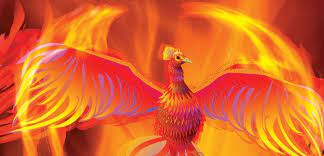
The Firebird marked the beginning of the now legendary collaboration between Igor Stravinsky and Serge Diaghilev, the impressario of the famous Ballet Russe. Stravinsky was a totally unknown pianist and composer in 1910, but The Firebird, followed by Petroushka and The Rite of Spring, catapulted him to the forefront of contemporary composers, a position never relinquished.
The story concerns the Firebird, a beautiful ballerina with orange wings, and Ivan, a young prince who hunts for the Firebird, finally capturing her. She gives him a golden feather as ransom and disappears. Later, Ivan is captured by the demon Kastchei, but he waves the golden feather and the beautiful Firebird comes to his rescue. He is taken to a metal box containing an egg, which is the soul of Kastchei the Terrible. He smashes the egg, and the princess and nobles are forever freed of the spell of Kastchei and his followers.
- Program Note from Program Notes for Band
Kingfishers Catch Fire
A kingfisher is a bird with beautiful, brilliantly colored feathers that look in sunlight as if they are on fire. Kingfishers are extremely shy birds and are rarely seen, but when they are seen, they are undeniably beautiful.
The first movement, Following Falls and Falls of Rain, is suspended in tone, but with hope, depicting the kingfisher slowly emerging from its nest in the early morning stillness, just after a heavy rain storm. The second movement, Kingfishers Catch Fire, imagines the bird flying out into the sunlight.
The work features optional antiphonal trumpets placed behind the audience. The trumpet solo in the first movement is played from the back of the hall, and the trumpet flourishes in the second movement are played by the antiphonal trumpet choir. You may catch the reference to Stravinsky's Firebird at the end of the piece.

Kingfishers Catch Fire was commissioned by Kentaro Hino (Hikarigaoka Girls' High School), Mamoru Nakata (Wind Ensemble du Nord), Masafumi Matsumoto (Okayama Sanyo High School), Kotai Yo (Wind Ensemble "KANADE"), Toshiya Iwata (Kawasaki University of Medical Welfare "Heartful Winds"), Taizo Okuyama (Wind Ensemble Soleil), and Shintaro Fukumoto (Community Band of Sagamihara). Consortium organized by Mamoru Nakata.
The work was premiered on March 17, 2007 JWECC '07 Special Band, conducted by Ichiro Saito.
- Program Note by composer
